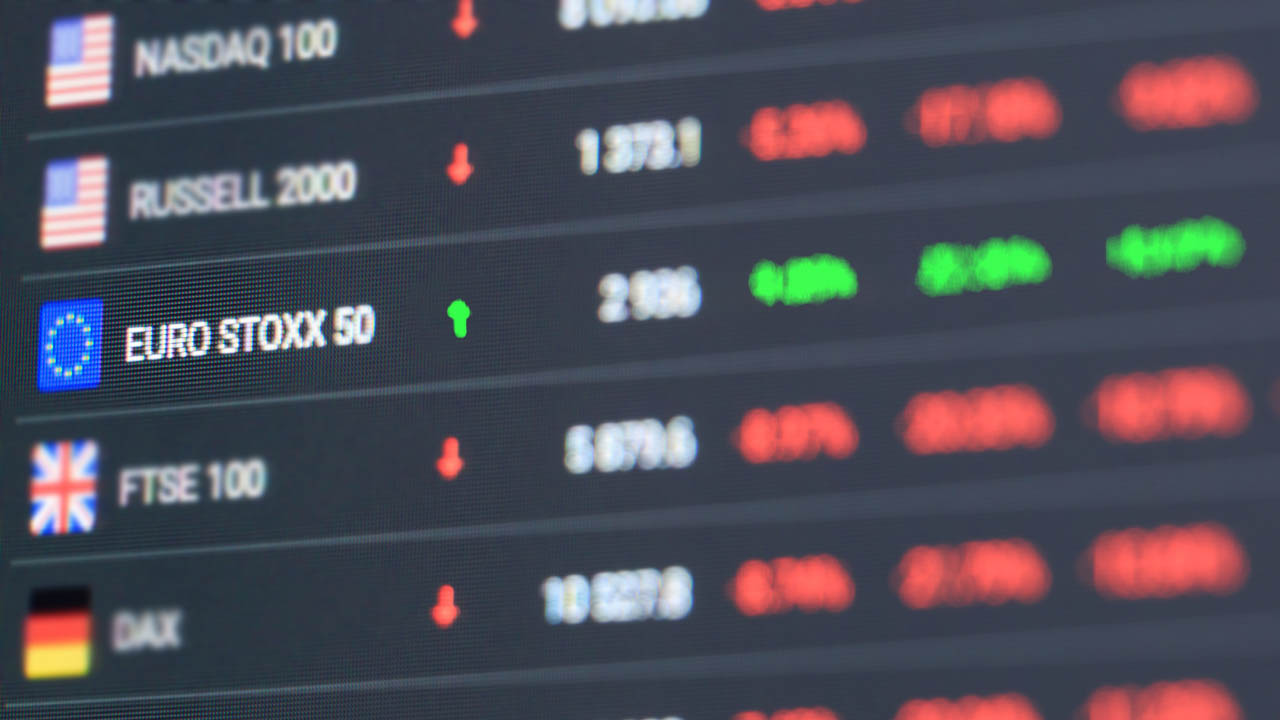As one of Europe's most widely followed stock indices, it represents diverse industries and sectors, making it a reliable indicator of European market sentiment. It includes companies from varied sectors like technology, consumer, energy, and health care.
In this article, we discuss the Euro Stoxx 50 index in depth.
What is the Euro Stoxx 50 index?
The Euro Stoxx 50 index tracks the performance of 50 large, liquid, and blue-chip companies from various Eurozone countries. The index is designed to represent the overall performance of the European stock market and is often used as a benchmark for investors and fund managers to assess the performance of their European investments.
The companies included in the Euro Stoxx 50 are selected based on market capitalization, liquidity, and sector representation. The index is weighted by the free-float market capitalization of its constituents, meaning that companies with larger market capitalizations have a higher influence on the index's overall performance.
Top 10 companies in the Euro Stoxx 50 index
Here are the top 10 companies in the Euro Stoxx 50 index as of December 2022:
- LVMH: Formed in 1987, Louis Vuitton Moët Hennessy (LVMH) is a luxury goods conglomerate, owning prestigious brands like Louis Vuitton, Moët & Chandon, and Christian Dior, with a global presence in fashion, wines, and spirits. It has the largest market capitalization (cap) in the index equaling $364.19 billion.
- ASML Holding: A 1984 incorporated leading semiconductor equipment manufacturer specializing in lithography machines used to produce advanced microchips for the technology industry. It has the second-largest market cap of $222.28 billion.
- Prosus: Started in 1997, Prosus is a technology investment holding company with a diverse portfolio of internet businesses, including e-commerce, online classifieds, and food delivery services. Its market cap equals $206.01 billion.
- L'Oréal: Founded in 1909, L'Oréal is a renowned beauty and cosmetics company offering a wide range of skincare, makeup, haircare, and fragrance products globally. Its market cap equals $190.34 billion.
- Hermes International: Incorporated in 1837, Hermes International is a luxury fashion house famous for its high-end leather goods, silk scarves, and ready-to-wear clothing, epitomizing French luxury craftsmanship. It has a total market cap worth $162.68 billion.
- Linde AG (now part of Linde plc): Formed in 1879, it is a multinational industrial gas company providing gas and engineering solutions to various industries, from healthcare to manufacturing. Its total market cap is $162.60 billion.
- TotalEnergies SE: A 1924-born integrated energy company, TotalEnergies SE is involved in the exploration, production, refining, and marketing of oil and gas, as well as renewable energy projects. Its market cap is $157.32 billion.
- Sanofi: Formed in 1973, Sanofi is a global pharmaceutical company engaged in the research, development, and production of a diverse range of healthcare products, including vaccines and medications. Its market cap is the eighth largest in the index, equalling $121.65 billion.
- SAP SE: A 1972 software company specializing in enterprise resource planning (ERP) software and cloud-based business applications, catering to businesses of all sizes. It has a market cap of $121.02 billion.
- Anheuser-Busch InBev: Established in 1852, Anheuser-Busch InBev is the world's largest brewing company, responsible for a wide array of well-known beer brands, including Budweiser, Stella Artois, and Corona. It has the lowest market cap amongst the top ten companies in the index, equalling $119.99 billion.
**Past performance is not a reliable indicator of future performance.
How to trade the index?
Trading the index directly
To trade the index directly, investors have several options. They can invest in index funds or exchange-traded funds (ETFs) that track the index's performance, offering diversified exposure to a basket of stocks. Alternatively, they can trade index futures contracts, agreeing to trade the index at a predetermined price on a future date and allowing for speculation and hedging. Another approach is trading index options, allowing traders to trade the index at a specific price within a specified period, offering flexibility for various trading strategies.
Trading the index via CFDs
Trading the index through Contracts for Difference (CFDs) involves choosing a reputable CFD broker, opening a trading account, and selecting the desired index CFD from the broker's offerings. Traders can go long or short on the index CFD, speculating on its price movements without owning the underlying assets. CFDs offer leverage, enabling traders to gain exposure to larger positions with a smaller upfront investment. Risk management tools like stop-loss orders are essential to manage potential losses and realize gains. Traders can monitor the index's price movements and close the CFD trade.
Diversify the trading portfolio with Euro Stoxx 50
With its market capitalization-weighted methodology, the index provides valuable insights into the overall health and sentiment of the European stock market, offering investors a diverse and efficient way to gauge regional economic performance and trends.
However, it is important to understand the risks associated. The Euro Stoxx 50, like any other stock market investment, is susceptible to market volatility, and its value can fluctuate. Economic conditions, geopolitical events, and industry-specific issues can all have an impact on the index's and underlying companies' performance. Before investing in the Euro Stoxx 50 or any other stock market index, traders must analyze their risk tolerance, carry out thorough analysis, and carefully consider their investment plan.
Disclaimer: All material published on our website is intended for informational purposes only and should not be considered personal advice or recommendation. As margin FX/CFDs are highly leveraged products, your gains and losses are magnified, and you could lose substantially more than your initial deposit. Investing in margin FX/CFDs does not give you any entitlements or rights to the underlying assets (e.g. the right to receive dividend payments). CFDs carry a high risk of investment loss.




